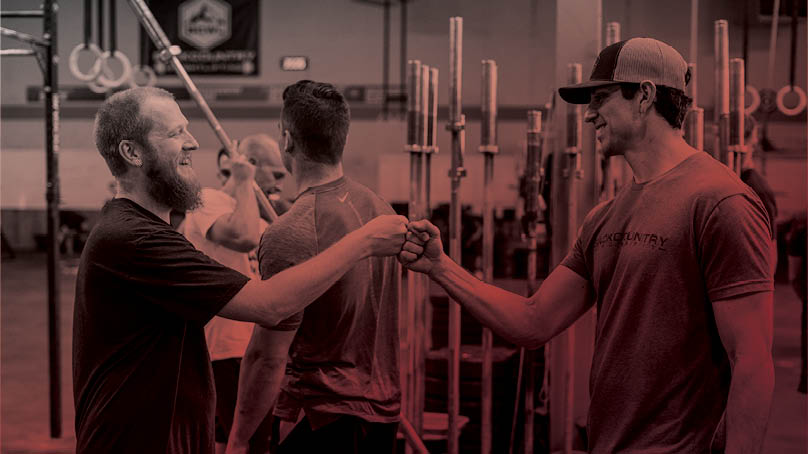Why Community is the Most Important Success Factor for Your Fitness Business

The Importance of Community
Community is the preeminent competitive advantage for your boutique fitness business. With competing business models like drop-in subscription platforms, building a sustainable fitness business is becoming more difficult and building a gym community has never been more important. Of course, your business should adopt innovation when appropriate but not if those innovations dilute your community. Quality instruction, location and pricing are still important components of a fitness business, but they are not competitive advantages in today’s connected marketplace. If community is the most important success factor for your fitness business, then your business model should encourage a loyal community – commitments rather than inconsistent transactions.
The community and culture you develop at your facility is what is going to keep your members coming back and bringing friends. Community is your unfair advantage when it comes to competing with franchises and big box gyms that may be boxed into a certain set of parameters.
– Rick Siegrist, Strategic Relationship Manager at Zen Planner
Building Community with Memberships
Recurring revenue is your gym’s financial foundation. With healthy levels of recurring revenue, you are able to project monthly financials, pay your fixed overhead and reinvest the remaining revenue to fuel growth. Memberships enable predictable revenue, and drop-ins do not.
The most profitable fitness businesses know drop-ins are not a true revenue stream. It’s one thing to use trending subscription platforms as marketing channels, but it should not be the foundation of your business. Sure, gyms make money from drop-ins, but drop-ins work best when they lead to membership agreements. Drop-ins are an effective way to introduce visitors and prospects to a fitness program, but they are transactional and do not align with long-term financial success.
Memberships are better for both businesses and customers. For businesses, memberships strengthen the community and make sustainable success more likely. For customers, a membership agreement provides more continuity and accountability.
These gyms become people’s “Third Place”. Outside of home and work, these are often the places members go to escape their daily struggles, and hang with the people they truly vibe with.
– Rick Siegrist, Strategic Relationship Manager at Zen Planner
Diversifying Your Revenue While Building Community
While reliable cash flow is a financial must-have, it is also important to diversify your revenue categories. With that said, the challenge becomes creating this variety without deviating from your community-focused model. Drop-ins, for example, may be considered a revenue category but they don’t align with a gym owner who is focused on building community through long-term relationships.
The good news is that you can diversify your revenue stream and build your community at the same time.Two great revenue categories that supplement a membership-based business are events and retail.
Events, specifically seminars, provide a unique opportunity for your community members to learn together and provides you with ancillary revenue. Furthermore, events are effective lead generation tools as you position yourself as the local authority.
Retail options vary depending on your area of expertise and focus. A simple yet powerful way to grow your community and diversify your revenue is through branded gear. From t-shirts to water bottles, offering retail items allows your community members to proudly showcase your brand.
Download our industry-leading Benchmark Reports.
Protecting Your Community’s Value
When it comes to your brand’s value perceived by both members and the general public, few things devalue a fitness business like discounting and dynamic pricing. Modeled after industries like airlines and hotels, dynamic pricing promises to help fitness business owners reach optimal income by selling spots in their class for a variable price that fluctuates depending on several factors including time of purchase, the popularity of the studio and class, and time of class.
Dynamic pricing can work for businesses that offer goods that are hard to price and hard to differentiate from each other, but fitness classes don’t really fall into either camp. A fitness class has more tangible costs than a seat on a plane. We can all make the mental leap to imagine what it takes to run a fitness business but the costs that go behind running an airline gets a lot trickier. In addition, each studio offers a specialized experience. Every time you visit, the moves are different, the music changes, the focus shifts, and even the crowd differs, but the community has been cultivated and is full of like-minded individuals who develop a level of comradery as they sweat together.
Trends like dynamic pricing shift power away from the small studio owners into one centralized marketplace – turning those fitness experiences into a commodity. Prices are set by outside variables and students belong to another organization’s virtual community rather than the one you built with your members.
If you want to learn more about how thriving fitness businesses operate, beyond limiting drop-ins and avoiding discounts, check out our free Annual Benchmark Reports.

I’m Coach Kelli, a devoted CrossFit gym owner with 15 years of experience managing my facility, along with owning yoga studios and wellness centers. Beyond the fitness world, I have a passion for cooking, cherish moments with my children and family, and find joy in spending time outside. Having experienced the highs and lows, I’m dedicated to leveraging my expertise to help you grow and succeed on your fitness journey.

I’m Coach Kelli, a devoted CrossFit gym owner with 15 years of experience managing my facility, along with owning yoga studios and wellness centers. Beyond the fitness world, I have a passion for cooking, cherish moments with my children and family, and find joy in spending time outside. Having experienced the highs and lows, I’m dedicated to leveraging my expertise to help you grow and succeed on your fitness journey.








